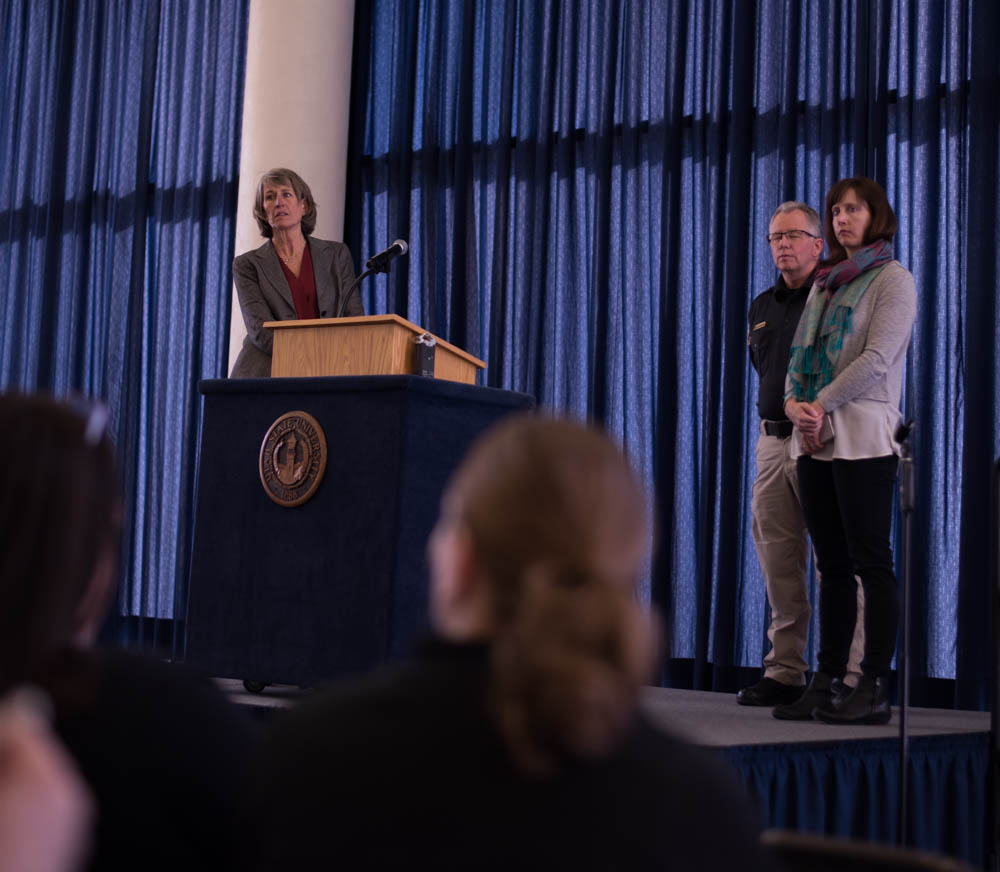‘We will be better because of this,’ USU administrators apologize for armed aggressor false alarm
One student learned of an “armed aggressor” at Utah State University from his wife, who was at home with their four children in a state of panic. Although he was on campus, he hadn’t received the “Code Blue” emergency alert his wife received, and was unaware of the situation.
Another student saw the Code Blue message light up on her phone as she was studying for a test. Understanding her personal safety was her first priority, she quit studying and sought safety.
“I was so shaken from the experience that I did not do very well on the exam,” she said.
Both students spoke during a town hall in the Taggart Student Center Sunburst Lounge on Thursday. Roughly 100 students and faculty were in attendance.
President Noelle Cockett stood at a podium jotting down the students’ suggestions. “I realize how frightening that was,” she said.
The event sought to express the administration’s empathy for students concerned or frightened by the false alarm. It was also designed to provide an explanation for why it occurred and how the Code Blue alert system can improve in the future.
While a technician was working on a button for the university’s emergency snow removal system on Wednesday, the Code Blue alert was inadvertently triggered, sending emails and text messages to thousands of people with the warning to “run, hide or fight.” Shortly afterward, students, faculty and their families received an update that the alert was a false alarm.
During the upgrade to the snow removal button, the “all clear” switch in the emergency system was disabled, which caused the eight-minute delay — authorities were forced to resort to a previous alert system that had been previously phased out.
“Messages need to get out very fast,” said USU Chief of Police, Michael Kuehn. “Time is of the essence.”
“I deeply apologize for any disruption, anxiety, or angst that it has caused you, and we are trying to be better,” Kuehn said.
Director of Counseling and Psychological Services LuAnn Helms responded to student reports of emotional distress, saying feelings of panic, fear and intense emotion are all normal responses.
“Maybe for some, your emotions went on the shelf while you went into business mode, and later those emotions came up. If they didn’t, that still doesn’t mean anything is wrong,” Helms said.
“But thinking about the ‘what-ifs’ has a tendency to keep anxiety around. Be careful about putting too much energy into worst case scenarios.”
Helms encouraged students to use the SafeUT app, which offers instant access to licensed counselors via text or phone. She also said CAPS staff would be available Wednesday and Thursday for those who need help.
Several attendees suggested solutions to help them feel safer in the future, such as mandatory code blue registration, mandatory active shooter trainings, sirens and intercom systems in buildings, desktop alerts on campus computers and greater coordination between law enforcement and faculty.
Administrators also proposed solutions they are considering.
“We are looking at other vendors, essentially, to see if we can approve our system,” said Amanda DeRito, who works in the public relations and marketing office.
Cockett emphasized the lesson that can be gained from this experience.
“This experience is incredibly valuable to us,” she said. The response of students and faculty to an active shooter situation revealed the weaknesses in university preparedness.
“We will be better because of this,” Cockett said.

